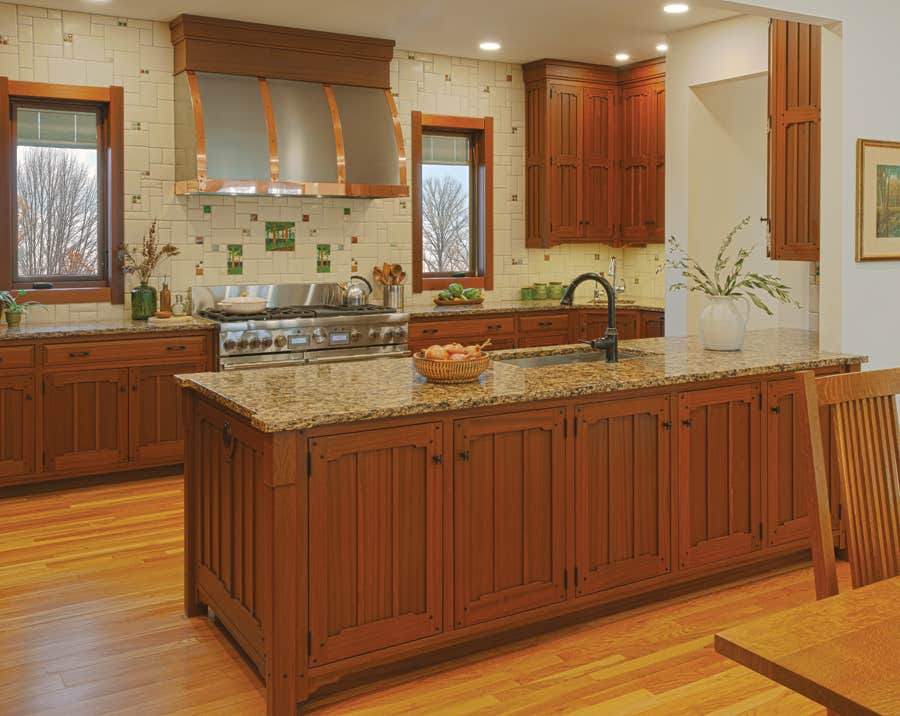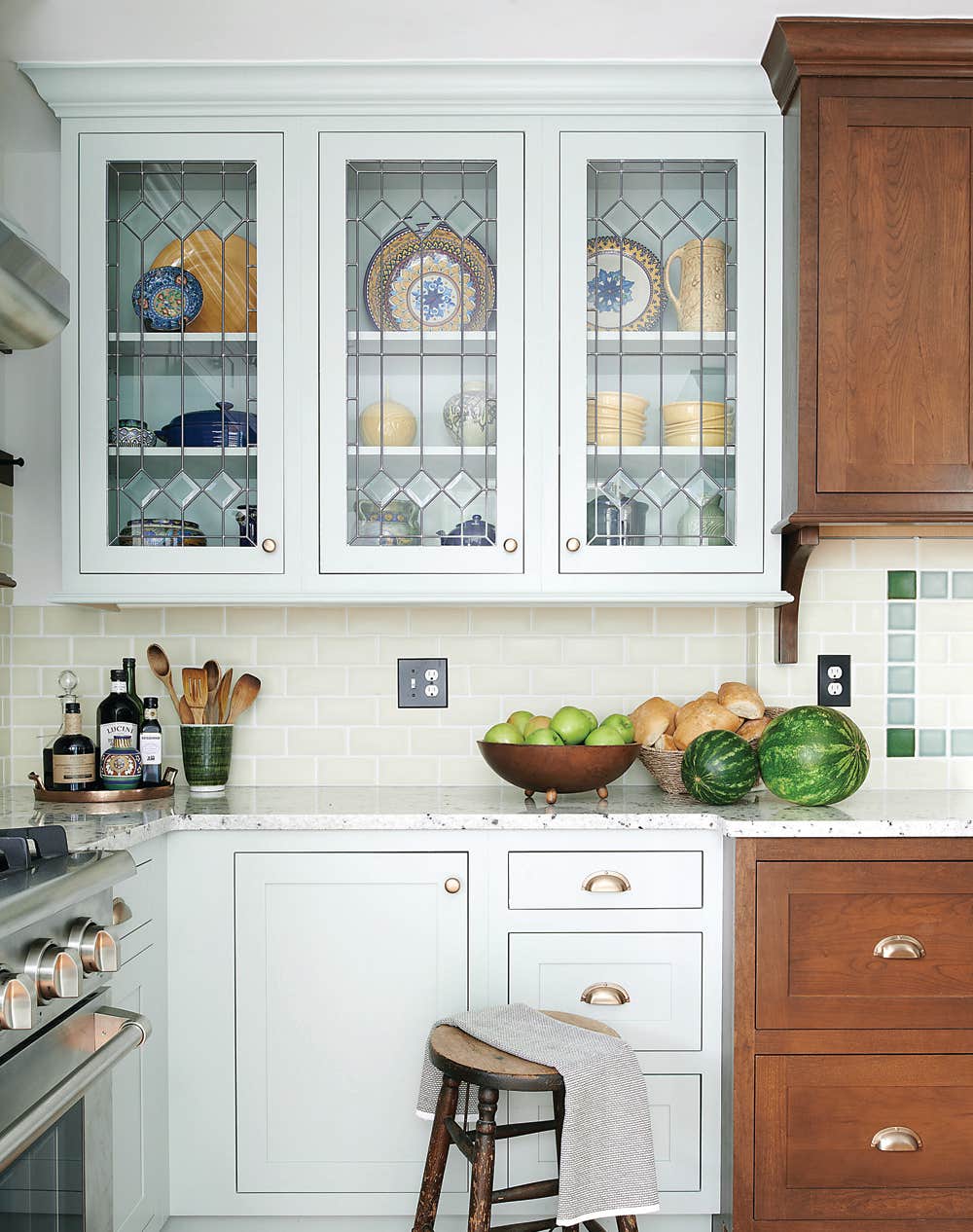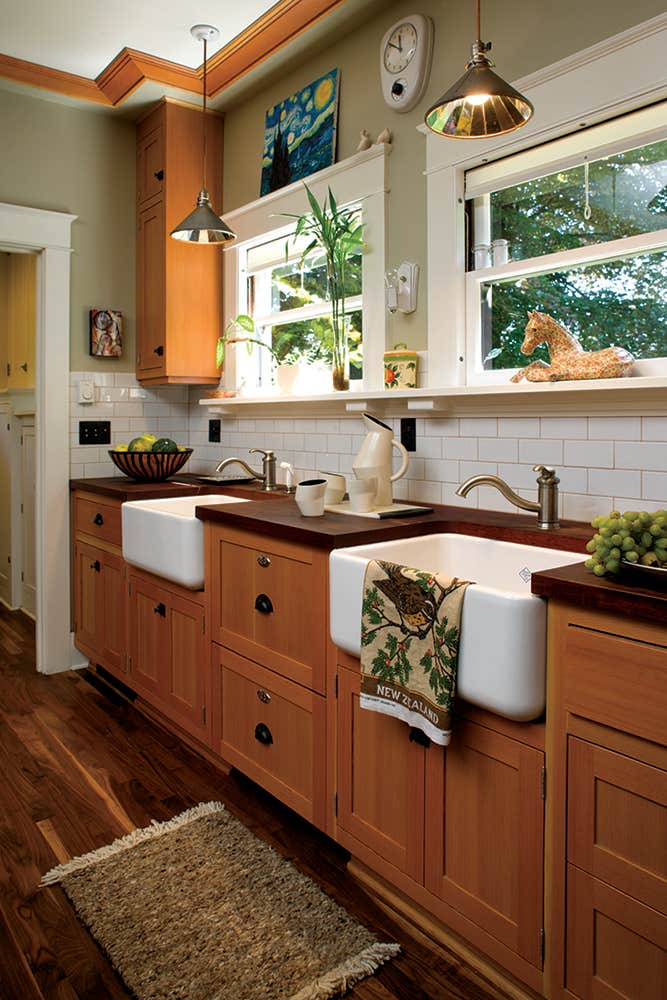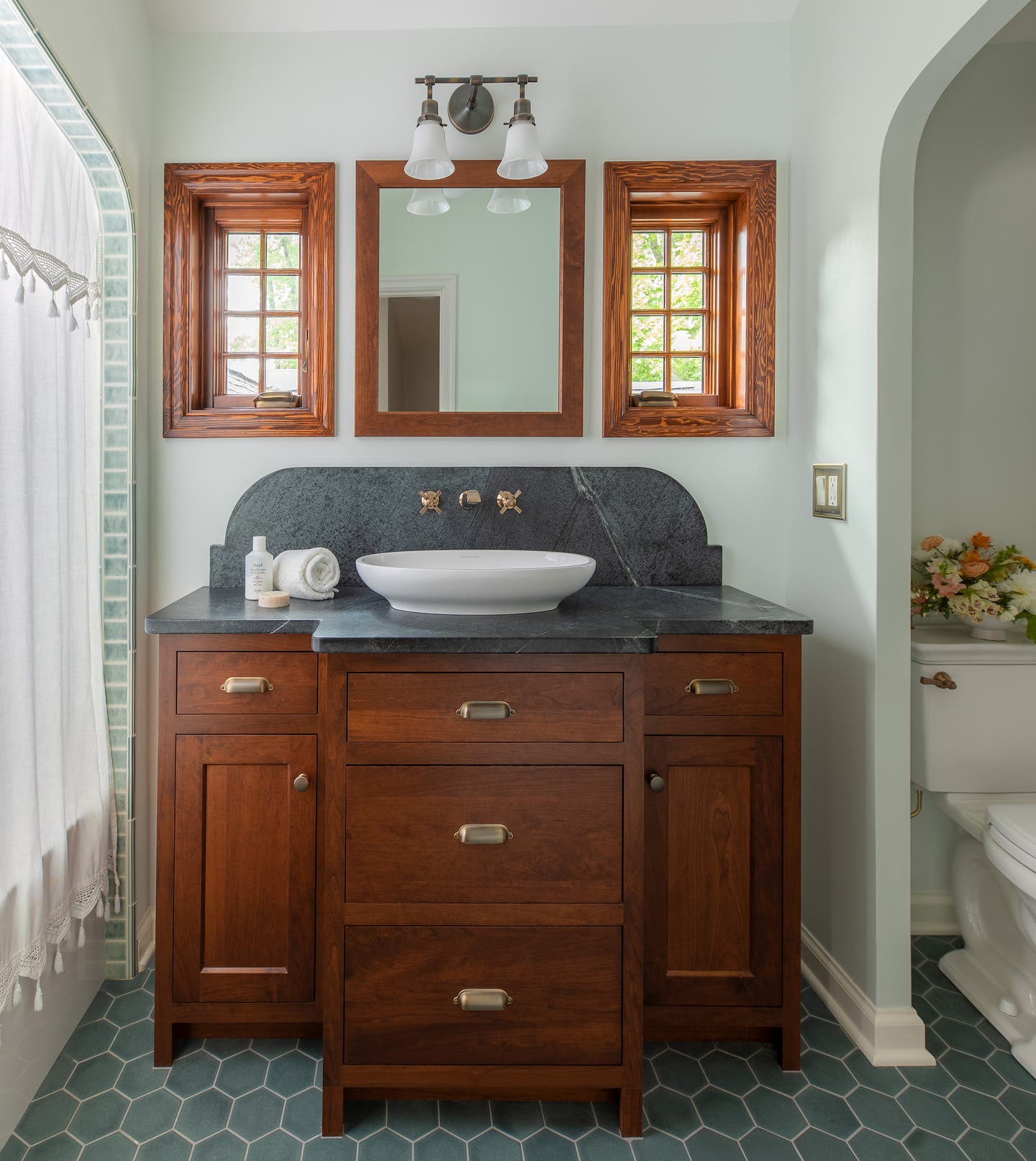True Blue Makeover for a 1922 Bath
“Our goal was to add as many creature comforts as we could, and leave the scene looking like we hadn’t touched a thing.”
Purchased as a fixer-upper, this 1922 Prairie-style house is home to design-studio founder David Heide and his husband, Michael Crull, who is the senior interior designer at the firm. Some years ago, the couple added on during a kitchen renovation. That addition includes a handsome powder room.
When the house was built, it had only one bathroom, upstairs, just 9' x 5'4". Heide and Crull added a third bath when they renovated the basement as a media room and guest suite. Finally, they got around to that original upstairs bathroom.
Functional but inelegant and cramped, it had been remodeled in the late 1980s. Michael Crull re-imagined it as a simple but subtly glamorous 1920s space. What was old is new again. Thousands of bathrooms survive from the 1920s and ’30s: period tile, pedestal sink, Art Deco lighting—and also clogged pipes, tub but no shower, window in the wrong place. The same problems plagued this one.
Several inches were borrowed from the adjacent hallway, allowing a bigger and symmetrical shower. “We gave up the only bathtub in the house,” Heide points out. “We see clients doing the same. Our new shower is actually more generous than the tub was.” It also has an integrated seat.
Crull says they wanted “to get away from white”—color had, in fact, been introduced in the 1920s, first in tile, and later in fixtures. Shards found behind the existing tile suggest the original tile was green. “But blue speaks to us,” Heide says; tones of blue are used throughout the house. “It’s peaceful …and watery.”
Tile is used not only on the floor and walls, but also as trim around windows and medicine cabinet. Decoration is minimal, due to the small size of the room. “The listello, or border tile, you’ll notice, is plain white, without pattern,” Crull says.
Details make the room function beautifully. Casement windows over the tub—now in the shower—had had an inward swing. They were re-engineered as outward-opening windows with a pull-across, interior screen that retracts invisibly into the right-hand jamb. Small, hinged, glass doors protect the wood sash from shower water. (The glass is textured for privacy.) All in all, the couple laughs, “that shower area is the most expensive three feet of any construction we’ve done!” “This isn’t a showy bath,” Crull says.
Still, decorative details are spot-on. Towel bars are glass, fittings are period-correct chrome. Antique Art Deco sconces flank the medicine cabinet. The vintage ceiling fixture features a reverse painted-glass collar and conical glass shade.
The old radiator is gone in favor of a low-profile, wall-mounted Runtal unit. The shelf over the radiator had been, if nothing else, useful countertop space. Crull created a nook set into the wall; the marble shelf displays a vase of flowers, but can also hold a guest’s toiletries.
Sources:
Design: Michael Crull, David Heide Design Studio
G.C. Golliker Construction, St. Paul: (651) 489-8482
Windows: Marvin
Wall tile: Cadet Blue 4" ‘Revival’ Mission Tile West
Floor tile: Subway Mosaics Heritage Tile
Toilet: ‘Kathryn’ Kohler
Antique sconces: Lightworks
Crystal knobs: ‘Old Town’ series Emtek
Patricia Poore is Editor-in-chief of Old House Journal and Arts & Crafts Homes, as well as editorial director at Active Interest Media’s Home Group, overseeing New Old House, Traditional Building, and special-interest publications.
Poore joined Old House Journal when it was a Brooklyn-brownstoner newsletter in the late 1970s. She became owner and publisher and, except for the years 2002–2013, has been its editor. Poore founded the magazines Old-House Interiors (1995–2013) and Early Homes (2004–2017); their content is now available online and folded into Old-House Journal’s wider coverage. Poore also created GARBAGE magazine (1989–1994), the first unaffiliated environmental consumer magazine.
Poore has participated, hands-on, in several restorations, including her own homes: a 1911 brownstone in Park Slope, Brooklyn, and a 1904 Tudor–Shingle Style house in Gloucester, Massachusetts, where she brought up her boys and their wonderful dogs.








